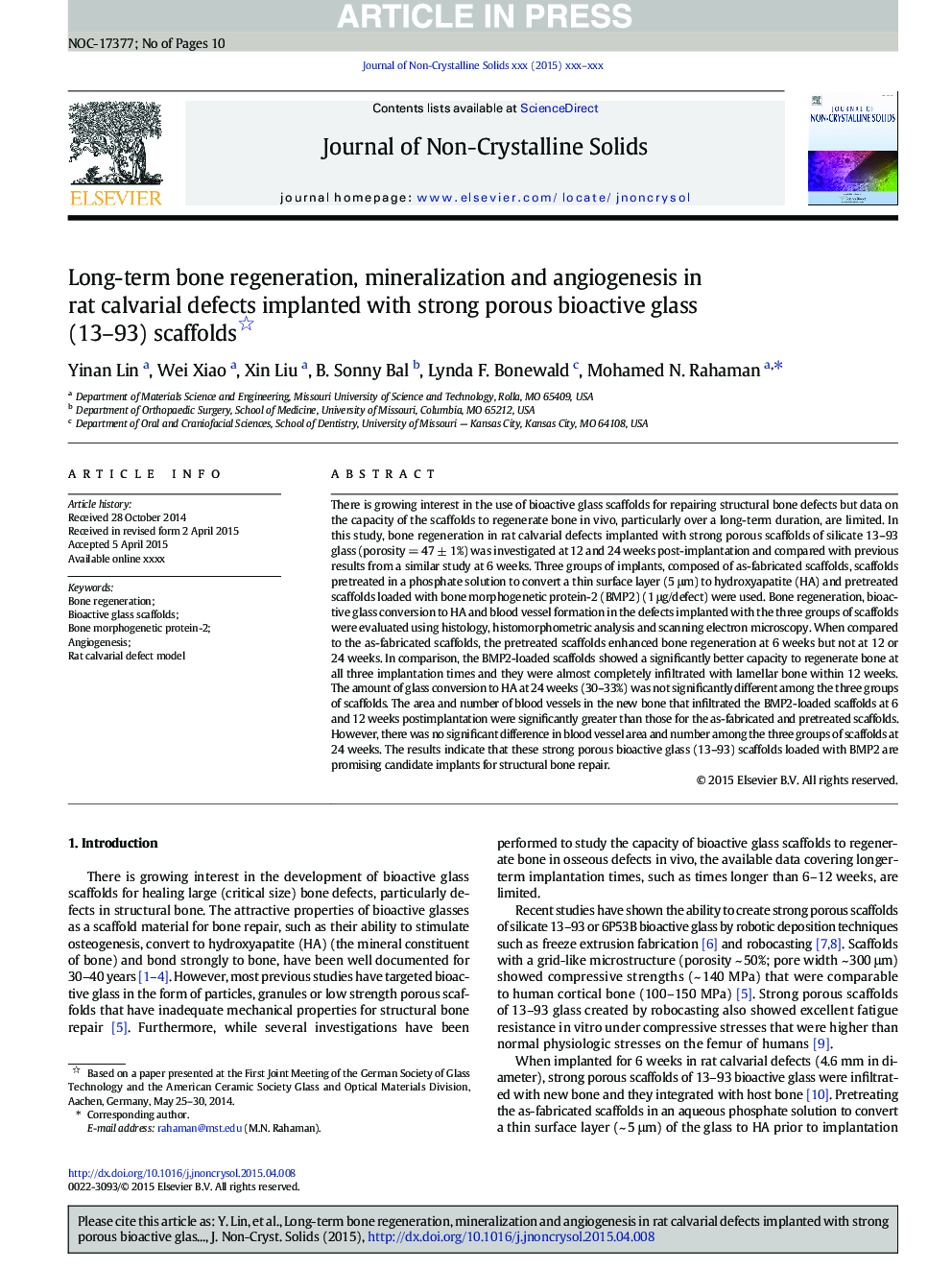| کد مقاله | کد نشریه | سال انتشار | مقاله انگلیسی | نسخه تمام متن |
|---|---|---|---|---|
| 10630949 | 991464 | 2016 | 10 صفحه PDF | دانلود رایگان |
عنوان انگلیسی مقاله ISI
Long-term bone regeneration, mineralization and angiogenesis in rat calvarial defects implanted with strong porous bioactive glass (13-93) scaffolds
ترجمه فارسی عنوان
بازسازی طولانی مدت استخوان، کانه زایی و آنژیوژنز در نقص های چشمی موش های کاشته شده با داربست های شیشه ای زیست فعال (13-93)
دانلود مقاله + سفارش ترجمه
دانلود مقاله ISI انگلیسی
رایگان برای ایرانیان
کلمات کلیدی
موضوعات مرتبط
مهندسی و علوم پایه
مهندسی مواد
سرامیک و کامپوزیت
چکیده انگلیسی
There is growing interest in the use of bioactive glass scaffolds for repairing structural bone defects but data on the capacity of the scaffolds to regenerate bone in vivo, particularly over a long-term duration, are limited. In this study, bone regeneration in rat calvarial defects implanted with strong porous scaffolds of silicate 13-93 glass (porosity = 47 ± 1%) was investigated at 12 and 24 weeks post-implantation and compared with previous results from a similar study at 6 weeks. Three groups of implants, composed of as-fabricated scaffolds, scaffolds pretreated in a phosphate solution to convert a thin surface layer (5 μm) to hydroxyapatite (HA) and pretreated scaffolds loaded with bone morphogenetic protein-2 (BMP2) (1 μg/defect) were used. Bone regeneration, bioactive glass conversion to HA and blood vessel formation in the defects implanted with the three groups of scaffolds were evaluated using histology, histomorphometric analysis and scanning electron microscopy. When compared to the as-fabricated scaffolds, the pretreated scaffolds enhanced bone regeneration at 6 weeks but not at 12 or 24 weeks. In comparison, the BMP2-loaded scaffolds showed a significantly better capacity to regenerate bone at all three implantation times and they were almost completely infiltrated with lamellar bone within 12 weeks. The amount of glass conversion to HA at 24 weeks (30-33%) was not significantly different among the three groups of scaffolds. The area and number of blood vessels in the new bone that infiltrated the BMP2-loaded scaffolds at 6 and 12 weeks postimplantation were significantly greater than those for the as-fabricated and pretreated scaffolds. However, there was no significant difference in blood vessel area and number among the three groups of scaffolds at 24 weeks. The results indicate that these strong porous bioactive glass (13-93) scaffolds loaded with BMP2 are promising candidate implants for structural bone repair.
ناشر
Database: Elsevier - ScienceDirect (ساینس دایرکت)
Journal: Journal of Non-Crystalline Solids - Volume 432, Part A, 15 January 2016, Pages 120-129
Journal: Journal of Non-Crystalline Solids - Volume 432, Part A, 15 January 2016, Pages 120-129
نویسندگان
Yinan Lin, Wei Xiao, Xin Liu, B. Sonny Bal, Lynda F. Bonewald, Mohamed N. Rahaman,
